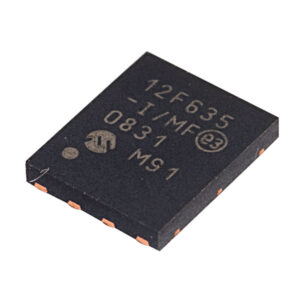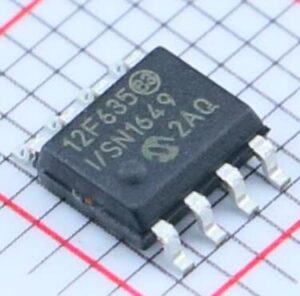Copy Microcontroller PIC12F635 Firmware from its flash memory, the heximal can be rewrite to new PIC12F635 MCU cloning after recover the content from microprocessor’s memory;

Setting a pin to an analog input automatically disables the digital input circuitry, weak pull-ups and interrupt-on-change if available. The corresponding TRIS bit must be set to Input mode in order to allow external control of the voltage on the pin when reading microchip pic16f687 flash firmware.
The Ultra Low-Power Wake-up (ULPWU) on RA0 allows a slow falling voltage to generate an interrupt-on-change on RA0 without excess current consumption. The mode is selected by setting the ULPWUE bit of the PCON register.
This enables a small current sink, which can be used to discharge a capacitor on RA0. Follow these steps to use this feature:
Charge the capacitor on RA0 by configuring the
RA0 pin to output (= 1).
Configure RA0 as an input.
Enable interrupt-on-change for RA0.
Set the ULPWUE bit of the PCON register to begin the capacitor discharge. Execute a SLEEP instruction. When the voltage on RA0 drops below VIL, an interrupt will be generated which will cause the device to wake-up and execute the next instruction after read microcontroller pic16lf689 flash.

If the GIE bit of the INTCON register is set, the device will then call the interrupt vector (0004h). See Section 4.4.2 “Interrupt-on-change” and Section 14.3.3 “PORTA/PORTB Interrupt” for more information.
This feature provides a low-power technique for periodically waking up the device from Sleep. The time-out is dependent on the discharge time of the RC circuit on RA0. See Example 4-2 for initializing the Ultra Low-Power Wake-up module.
A series resistor between RA0 and the external capacitor provides overcurrent protection for the RA0/AN0/C1IN+/ICSPDAT/ULPWU pin and can allow for software calibration of the time-out (see Figure 4-1) after copy microcontroller pic12f609 firmware.
A timer can be used to measure the charge time and discharge time of the capacitor. The charge time can then be adjusted to provide the desired interrupt delay. This technique will compensate for the affects of temperature, voltage and component accuracy. The Ultra Low-Power Wake-up peripheral can also be configured as a simple Programmable Low-Voltage Detect or temperature sensor.

